 W
WAn aiguillette, also spelled aguillette, aiglet or aglet, is a cord with metal tips or lace tags, or the decorative tip itself.
 W
WThe ceremonial baton is a short, thick stick-like object, typically in wood or metal, that is traditionally the sign of a field marshal or a similar high-ranking military officer, and carried as a piece of their uniform. The baton is distinguished from the swagger stick in being thicker and effectively without any practical function. A staff of office is rested on the ground; a baton is not. Unlike a royal sceptre that is crowned on one end with an eagle or globe, a baton is typically flat-ended.
 W
WA boutonnière is a floral decoration, typically a single flower or bud, worn on the lapel of a tuxedo or suit jacket.
 W
WTraditionally a bridal crown is a headdress that, in Central and Northern Europe, single women wear on certain holidays, at festivals and, finally, at their wedding. Bridal crowns today, of another type, are also often provided by church parishes for the use of brides at their weddings.
 W
WA camauro is a cap traditionally worn by the Pope of the Catholic Church.
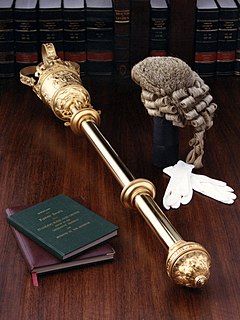 W
WA ceremonial mace is a highly ornamented staff of metal or wood, carried before a sovereign or other high officials in civic ceremonies by a mace-bearer, intended to represent the official's authority. The mace, as used today, derives from the original mace used as a weapon. Processions often feature maces, as on parliamentary or formal academic occasions.
 W
WA ceremonial weapon is an object used for ceremonial purposes to display power or authority. They are often used in parades and as part of dress uniforms.
 W
WA coronet is a small crown consisting of ornaments fixed on a metal ring. By one definition, a coronet differs from other kinds of crowns in that a coronet never has arches, and from a tiara in that a coronet completely encircles the head, while a tiara does not. By a slightly different definition, a crown is worn by an emperor, empress, king or queen; a coronet by a nobleman or lady. See also diadem.
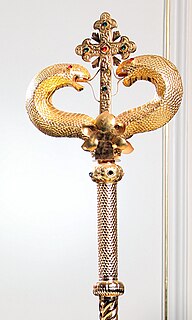 W
WA crosier is a stylized staff that is a symbol of the governing office of a bishop or Apostle and is carried by high-ranking prelates of Roman Catholic, Eastern Catholic, Eastern Orthodox, Oriental Orthodox, and some Anglican, Lutheran, United Methodist and Pentecostal churches.
 W
WA crown is a traditional form of head adornment, or hat, worn by monarchs as a symbol of their power and dignity. A crown is often, by extension, a symbol of the monarch's government or items endorsed by it. The word itself is used, particularly in Commonwealth countries, as an abstract name for the monarchy itself, as distinct from the individual who inhabits it. A specific type of crown is employed in heraldry under strict rules. Indeed, some monarchies never had a physical crown, just a heraldic representation, as in the constitutional kingdom of Belgium, where no coronation ever took place; the royal installation is done by a solemn oath in parliament, wearing a military uniform: the King is not acknowledged as by divine right, but assumes the only hereditary public office in the service of the law; so he in turn will swear in all members of "his" federal government.
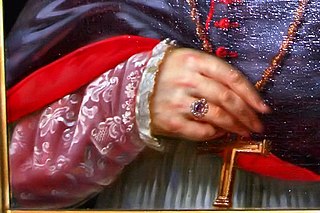 W
WAn ecclesiastical ring is a finger ring worn by clergy, such as a bishop's ring.
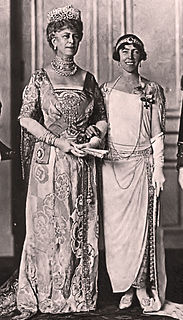 W
WLadies' evening gloves are long gloves worn by adult women as formal wear, usually to a formal outfit such as an evening gown or wedding dress. The longer the glove, the higher the formality. Among them, the longest evening gloves are called "opera gloves". The "elbow-length or longer" part is the key; gloves which cover a substantial portion of the forearm, up to just below the elbow, can legitimately be called "long gloves" or "evening gloves", but never "Opera Gloves". In this instance the term "Opera" probably has more to do with the length than occasion, as is also seen in "Opera Length Gloves" and "Opera Length Pearls".
 W
WLadies' evening gloves are long gloves worn by adult women as formal wear, usually to a formal outfit such as an evening gown or wedding dress. The longer the glove, the higher the formality. Among them, the longest evening gloves are called "opera gloves". The "elbow-length or longer" part is the key; gloves which cover a substantial portion of the forearm, up to just below the elbow, can legitimately be called "long gloves" or "evening gloves", but never "Opera Gloves". In this instance the term "Opera" probably has more to do with the length than occasion, as is also seen in "Opera Length Gloves" and "Opera Length Pearls".
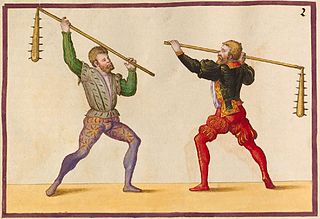 W
WA flail is a weapon consisting of a striking head attached to a handle by a flexible rope, strap, or chain. The chief tactical virtue of the flail was its capacity to strike around a defender's shield or parry. Its chief liability was a lack of precision and the difficulty of using it in close combat, or closely ranked formations.
 W
WThe fourragère is a military award, distinguishing military units as a whole, in the form of a braided cord. The award was first adopted by France, followed by other nations such as the Netherlands, Belgium, Portugal, and Luxembourg. Fourragères have been awarded to units of both national and foreign militaries, except for that of Luxembourg, which has not been awarded to any foreign units.
 W
WThe globus cruciger, also known as "the orb and cross", is an orb surmounted by a cross. It has been a Christian symbol of authority since the Middle Ages, used on coins, in iconography, and with a sceptre as royal regalia.
 W
WIn the neopagan religion of Wicca, a range of magical tools are used in ritual practice. Each of these tools has different uses and associations, and not to serve primarily to direct magical energies. They are used at an altar, inside a magic circle.
 W
WThe Marshal's Star is an additional badge of rank worn by marshals of the armed forces of the Soviet Union, and subsequently the Russian Federation.
 W
WIn the Eastern Orthodox and Eastern Catholic liturgical tradition, the omophorion is the distinguishing vestment of a bishop and the symbol of his spiritual and ecclesiastical authority. Originally woven of wool, it is a band of brocade decorated with four crosses and an eight-pointed star; it is worn about the neck and shoulders.
 W
WThe pallium is an ecclesiastical vestment in the Roman Catholic Church, originally peculiar to the pope, but for many centuries bestowed by the Holy See upon metropolitans and primates as a symbol of their conferred jurisdictional authorities, and still remains a papal emblem.
 W
WThe papal tiara is a crown that was worn by popes of the Catholic Church from as early as the 8th century to the mid-20th. It was last used by Pope Paul VI in 1963 and only at the beginning of his reign.
 W
WA presidential sash is a cloth sash worn by presidents of many nations in the world. Such sashes are worn by presidents in Africa, Asia, Europe and, most notably, in Latin America.
 W
WRegalia of the Russian tsars are the insignia of tsars and emperors of Russia from the 13th to the 20th centuries. Some of the artefacts were changed or substituted, the most radical change happened in the 18th century, when Peter the Great reformed the state and transitioned it to European-style monarchy.
 W
WA sceptre or scepter is a staff or wand held in the hand by a ruling monarch as an item of royal or imperial insignia. Figuratively, it means royal or imperial authority or sovereignty.
 W
WA shoulder mark, also called a shoulder board, rank slide, or slip-on, is a flat cloth sleeve worn on the shoulder strap of a uniform. It may bear rank or other insignia, and should not be confused with an epaulette, although the two terms are often used interchangeably.
 W
WA sword of state is a sword, used as part of the regalia, symbolizing the power of a monarch to use the might of the state against its enemies, and his or her duty to preserve thus right and peace.
 W
WThe vine staff, vine-staff, or centurion's staff was a vinewood rod of about 3 feet (1 m) in length used in the ancient Roman Army and Navy. It was the mark and tool of the centurion: both as an implement in the direction of drill and maneuvers; and to beat wayward or laggard soldiers or sailors under his command. It was also borne by evocati who held an equivalent rank.
 W
WA wand is a thin, light-weight rod that is held with one hand, and is traditionally made of wood, but may also be made of other materials, such as metal or plastic. Long versions of wands are often styled in forms of staves or sceptres, which could have large ornamentation on the top.